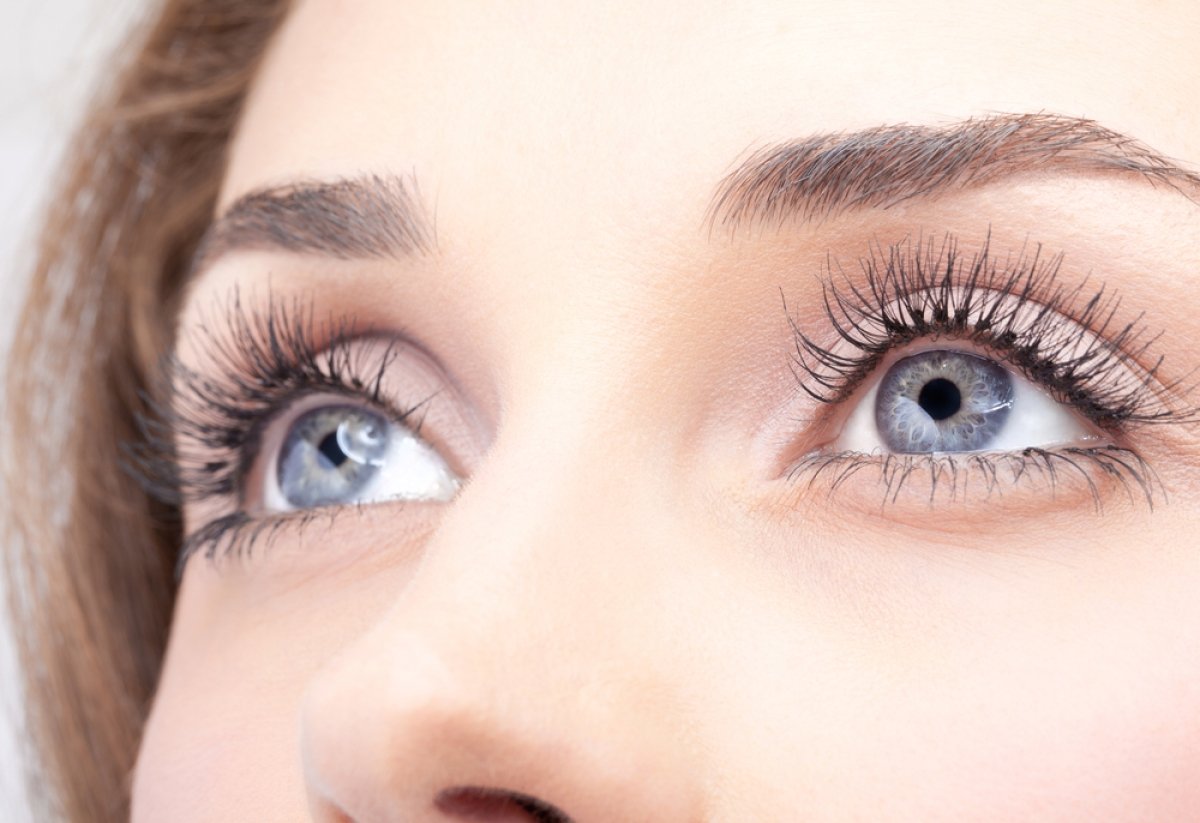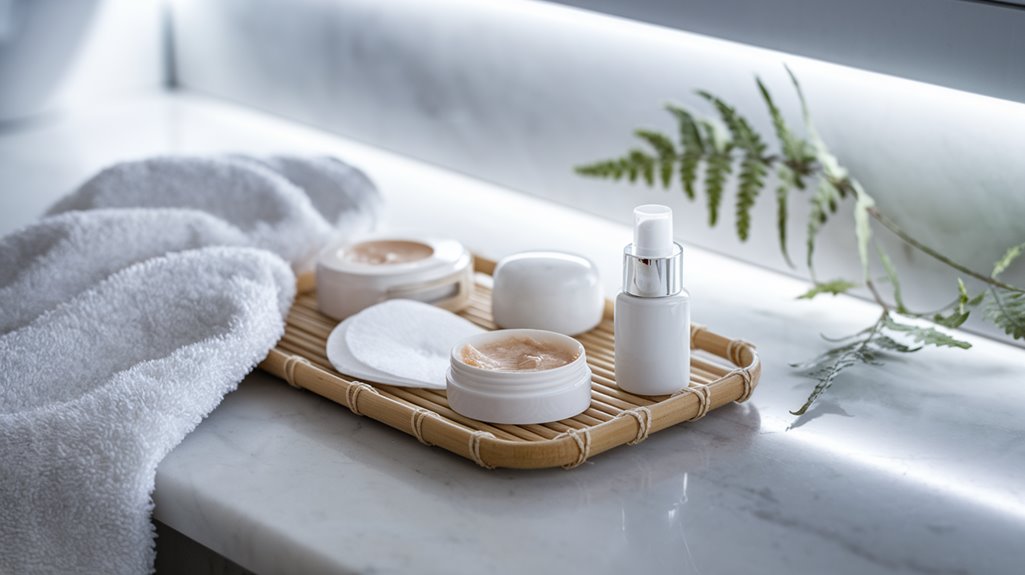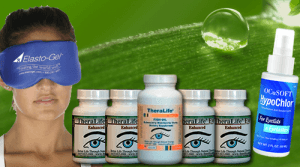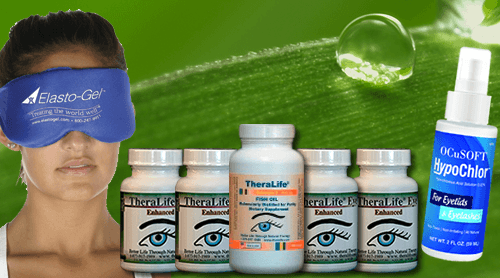To effectively manage blepharitis, theralife.com offers a range of specialized products that emphasize natural and holistic treatment strategies. By using pH-balanced and hypoallergenic cleansers, theralife.com products ensure gentle yet effective eyelid cleaning. Their formulations often incorporate natural antimicrobial agents like tea tree oil, which help in reducing inflammation and eliminating bacteria.
Theralife.com also recommends the use of warm compresses, which are beneficial for loosening debris and unblocking glands, enhancing the effectiveness of their products. Their comprehensive approach includes dietary advice, encouraging the intake of omega-3s, lutein, and zinc to further support eye health.
Additionally, theralife.com provides insights into recognizing and avoiding common triggers, such as allergens or harsh cosmetics, to prevent flare-ups. For those seeking advanced care, theralife.com suggests exploring professional treatments that complement their product offerings to elevate your eyelid care strategy.
By focusing on natural and scientifically backed solutions, theralife.com benefits its customers by providing effective, safe, and holistic options for managing blepharitis and enhancing overall eye health.
Best Blepharitis Treatment From TheraLife
Add To CartKey Takeaways
- Perform daily eyelid cleaning using a gentle cleanser and warm water to prevent inflammation and infection.
- Use warm compresses to loosen crusts and unblock oil glands, applied for 5-10 minutes, 2-3 times daily.
- Choose natural cleansers with tea tree oil or chamomile for their antimicrobial and anti-inflammatory properties.
- Maintain a balanced diet rich in omega-3, lutein, and vitamin C to support eye health and reduce inflammation.
- Consult an ophthalmologist regularly for personalized care and treatment tailored to your blepharitis condition.
Understanding Blepharitis and Its Causes
Blepharitis is an inflammation of the eyelid margins, often resulting from a bacterial infection, seborrheic dermatitis, or malfunctioning oil glands.
You might identify symptoms such as redness, itching, burning sensations, and crusted eyelashes. Chronic cases can lead to blurred vision or loss of eyelashes. Recognizing these symptoms early is essential for effective management.
Risk factors include poor eyelid hygiene, dandruff, rosacea, and contact lens use. Those with oily skin or a history of skin conditions are particularly susceptible.
Understanding these risk factors helps in mitigating the onset of blepharitis. By being vigilant about these identifying symptoms and risk factors, you can take proactive steps to address the underlying causes and prevent exacerbation.
Meibomian gland dysfunction can be a significant contributor to blepharitis, as it leads to blocked oil glands and exacerbates dry eye conditions.
The Importance of Consistent Eyelid Cleaning
A consistent eyelid cleaning routine is essential for maintaining ocular health, as it effectively removes debris and prevents bacterial build-up. Research indicates that daily cleansing can reduce the incidence of eyelid inflammation and infection. Regularly using warm compresses can help loosen crusts and debris, further aiding in the management of symptoms.
Daily Cleansing Routine
Even though it might seem trivial, maintaining a consistent eyelid cleaning routine is essential for ocular health. Employing eyelid exfoliation techniques can help remove debris and dead skin, preventing irritation and inflammation. You can utilize natural cleansing oils, such as tea tree or coconut oil, to gently cleanse the eyelids. These oils possess antimicrobial properties that can reduce the risk of infection. Begin by applying a few drops of the oil on a cotton pad, then gently wipe along the lash line. This process not only cleanses but also nourishes the delicate skin around the eyes. Consistent practice of these methods minimizes the risk of blepharitis flare-ups, promoting overall eye comfort and health. Poor eyelid hygiene can exacerbate symptoms of blepharitis, making regular cleaning even more crucial. Prioritize this simple yet effective daily routine.
Preventing Bacterial Build-up
Maintaining eyelid hygiene is more than just a cleansing routine; it’s a proactive measure against bacterial accumulation. Effective bacterial prevention strategies involve consistent cleaning to reduce the risk of blepharitis.
Utilizing a warm compress can loosen debris and oil, which, when followed by a gentle eyelid scrub, effectively removes potential bacterial build-up. The eyelid hygiene importance can’t be overstated, as this process decreases the likelihood of infection and inflammation.
Regularly applying these methods guarantees a reduction in bacterial colonization, keeping your eyelids healthy. Avoid harsh chemicals that can disrupt the delicate ocular surface. Instead, opt for lid cleansers with balanced pH levels.
Incorporating these steps into your daily regimen promotes superior eyelid health and minimizes recurrent infections. Hypochlorous acid solutions are effective against microbial agents and are a recommended choice for maintaining eyelid hygiene.
Choosing the Right Cleansing Products
How do you guarantee the products you use for eyelid hygiene are the most effective? Opt for cleansers with natural ingredients, as they minimize irritation and enhance product effectiveness. Look for products containing tea tree oil or chamomile, known for their anti-inflammatory properties. Verify the product’s pH balance; it should be close to your skin’s natural pH to avoid disruption of the eyelid’s barrier function. Ascertain the product is clinically tested for safety and efficacy. Warm compresses are essential for improving meibomian gland function and should be included in your routine.
Here’s a quick guide:
| Ingredient | Benefit | Consideration |
|---|---|---|
| Tea Tree Oil | Anti-inflammatory | Check for allergies |
| Chamomile | Soothes irritation | May not suit sensitive skin |
| Hypoallergenic Base | Reduces allergic reactions | Essential for sensitive skin |
Choosing wisely can greatly impact your blepharitis management.
Step-by-Step Eyelid Cleaning Routine
To effectively clean your eyelids, start by gathering essential supplies such as a gentle cleanser, cotton pads, and warm water. Evidence supports using a sterile technique to apply the cleanser with a cotton pad, wiping from the inner to the outer eyelid margin. Consistent use of this method can reduce bacterial load and help maintain ocular health. Regular eyelid hygiene is crucial to minimize symptom recurrence and prevent blepharitis.
Gather Necessary Cleaning Supplies
Before you begin your eyelid cleaning routine, it’s important to gather the necessary supplies to guarantee an effective and safe process.
Start with hygiene essentials such as a sterile cotton pad or gauze, which are vital for gentle application and absorption. Choose a hypoallergenic eyelid cleanser specifically designed for eye care to minimize irritation and maintain the delicate balance of your eyelids’ natural flora.
An antimicrobial eyelid wipe can be beneficial for reducing bacterial load while ensuring thorough cleansing. Opt for preservative-free saline solution to rinse away debris without introducing additional irritants. Consider using a cleanser containing pure hypochlorous acid, a natural defense mechanism against pathogens, to further enhance the effectiveness of your routine.
Finally, have a clean towel ready to dry your eyelids post-cleaning. These supplies form the foundation of effective eyelid hygiene, supporting the management of blepharitis and promoting overall ocular health.
Follow Proper Cleaning Techniques
While guaranteeing eyelid health, it’s vital to follow proper cleaning techniques for ideal results. Start by washing your hands thoroughly to prevent contamination.
Use a sterile cotton pad or a soft cloth soaked in warm water. Gentle cleansing is significant due to eyelid sensitivity; apply proper pressure to avoid irritation. Place the pad over your closed eyelid, gently swiping from the inner to the outer corner, guaranteeing removal of debris.
This motion maintains eyelid margin hygiene, reducing bacterial proliferation. If using a cleaning solution, confirm it’s ophthalmologist-recommended for safety.
Blepharitis can lead to chronic dry eyes and other complications if proper hygiene is not practiced consistently.
Perform this routine twice daily, adhering to consistency for best outcomes. Monitoring for signs of discomfort or redness can prevent complications, verifying your eyelids remain healthy and irritation-free.
Exploring Effective Home Remedies
Considering the importance of eyelid hygiene, it’s vital to explore effective home remedies that can support eye health.
Natural treatments, like tea tree oil, are often recommended due to their antimicrobial properties. Dilute tea tree oil with a carrier oil before applying it to your eyelids to reduce demodex mites, which can exacerbate blepharitis.
Herbal remedies, such as chamomile compresses, may provide anti-inflammatory benefits. Steep chamomile tea, let it cool, and gently apply it using a clean cloth.
Aloe vera gel can be beneficial too, given its soothing and moisturizing effects. Apply a small amount to the eyelids, making sure it’s pure and free from additives.
Proper eyelid hygiene and daily eyelid cleaning can significantly alleviate symptoms, preventing bacteria and oil accumulation that contribute to blepharitis.
Always consult with an ophthalmologist before trying these remedies to confirm they’re safe for your specific condition.
Managing Symptoms With Warm Compresses
Applying warm compresses is a highly effective method for managing eyelid inflammation and discomfort. By utilizing warm compress benefits, you can alleviate symptoms associated with blepharitis, such as redness, swelling, and irritation.
The warmth from the compress promotes increased blood circulation, which aids in the secretion of natural oils from the eyelid glands. This process helps unclog blocked glands, reducing inflammation and preventing further irritation.
For effective application, make sure the compress maintains a consistent, comfortable temperature. Apply it gently to your closed eyelids for 5-10 minutes, repeating this process two to three times daily.
The moist heat softens crusts and debris along the eyelid margins, facilitating their removal. Consistent use of warm compresses can greatly improve eyelid hygiene and symptom management, enhancing overall comfort.
It’s important to maintain proper hand hygiene before applying warm compresses to prevent infection and promote healing.
The Role of Diet and Nutrition in Eye Health
You should prioritize nutrients like omega-3 fatty acids, lutein, and zeaxanthin to support ideal eye health and reduce inflammation.
Evidence suggests that excessive intake of sugars and trans fats may exacerbate ocular conditions, so it’s vital to minimize these in your diet.
Incorporating leafy greens, fish, and nuts can provide the essential vitamins and minerals your eyes need.
Nutrients for Optimal Eyes
While many factors influence eye health, diet and nutrition play an essential role in maintaining ideal vision. Consuming eye-friendly nutrients and vision-boosting foods can greatly enhance ocular health.
Consider these important nutrients:
- Omega-3 Fatty Acids: Found in fish like salmon, they support retinal function and reduce inflammation.
- Lutein and Zeaxanthin: Present in leafy greens, these antioxidants protect against harmful high-energy light.
- Vitamin C: Abundant in citrus fruits, it guards against cataracts by combating oxidative stress.
- Zinc: Integral for enzyme function in the retina, available in nuts and seeds.
Incorporating these nutrients into your diet promotes ideal eye health, helping you maintain clear, sharp vision throughout your life.
Prioritize these elements to support your eyes effectively.
Foods to Avoid
Though maintaining a diet rich in essential nutrients is vital for eye health, it’s equally important to be mindful of foods that could potentially harm your vision.
Consuming excessive sugary snacks can lead to systemic inflammation, which may exacerbate conditions like blepharitis by affecting the meibomian glands. High sugar intake is also associated with insulin resistance, potentially contributing to ocular surface diseases.
Similarly, fried foods contain trans fats, which can increase cholesterol levels and contribute to oxidative stress, impairing retinal health over time. Reducing your intake of these detrimental foods can improve overall eye health.
Instead, focus on incorporating anti-inflammatory foods such as leafy greens and omega-3-rich fish to support ideal visual function and minimize the risk of eye-related issues.
Recognizing and Avoiding Triggers
Understanding the triggers that can lead to eyelid irritation is essential for maintaining healthy eyelids. Accurate trigger identification allows you to mitigate potential exacerbations of blepharitis.
Environmental factors play a significant role. Consider these key elements:
- Allergens: Pollen, dust mites, and pet dander can cause inflammation. Identify specific allergens through testing.
- Cosmetic Products: Harsh ingredients in makeup or skincare can irritate eyelids. Opt for hypoallergenic options.
- Weather Conditions: Dry, windy, or excessively humid climates may contribute to flare-ups. Protective eyewear can be beneficial.
- Air Quality: Pollutants and smoke are known irritants. Using air purifiers helps reduce exposure indoors.
Monitoring these factors empowers you to prevent irritation, ensuring a proactive approach in managing blepharitis effectively.
Integrating Professional Treatments and Advice
When managing blepharitis, integrating professional treatments and expert advice is essential for effective symptom control. Engage in regular professional consultations to accurately assess the severity and type of your blepharitis.
An ophthalmologist can provide evidence-based treatment options, including prescription medications like antibiotic ointments or oral antibiotics for bacterial infections. They may recommend anti-inflammatory eye drops to alleviate swelling and irritation.
Additionally, professional advice may include warm compresses and lid scrubs, which enhance eyelid hygiene. Follow your doctor’s guidance on frequency and technique to maximize effectiveness.
Don’t ignore persistent symptoms; they require immediate medical attention to prevent complications. By combining professional insights with consistent care practices, you’ll optimize management strategies and improve overall outcomes for blepharitis.
Building a Comprehensive Eyelid Care Plan
How can you build a thorough eyelid care plan tailored to your needs?
Prioritize a systematic approach by integrating evidence-based practices and lifestyle adjustments. Consider the following steps:
- Daily Eyelid Hygiene: Implement a regimen using non-irritating, hypoallergenic cleansers to reduce bacterial load and debris accumulation on the eyelid margin.
- Warm Compresses: Use warm compresses daily to enhance meibomian gland function, promoting lipid secretion and reducing inflammation.
- Dietary Modifications: Incorporate omega-3 fatty acids to support ocular surface health and potentially mitigate inflammatory processes associated with blepharitis.
- Regular Monitoring: Schedule periodic evaluations with an ophthalmologist to assess eyelid health and adjust care plans as necessary.
Frequently Asked Questions
Can Blepharitis Lead to Vision Loss if Untreated?
If you leave blepharitis untreated, symptom progression could potentially contribute to vision issues.
Persistent inflammation may lead to complications such as scarring or corneal damage, impacting your sight.
It’s vital to explore treatment options early to manage symptoms effectively.
Approaches like eyelid scrubs, warm compresses, or prescribed medications can prevent further complications.
Evidence underscores the importance of consistent care to avoid severe outcomes, ensuring your vision remains unaffected.
Are Contact Lenses Safe to Wear With Blepharitis?
You can wear contact lenses with blepharitis, but it requires strict adherence to lens care and hygiene practices.
Make certain your lenses are cleaned and replaced as recommended by your optometrist. Avoid wearing them if symptoms worsen, as inflammation can exacerbate discomfort or infection.
Evidence suggests regular eyelid cleaning and using preservative-free artificial tears can help manage symptoms, promoting safer contact lens use even with blepharitis.
Always consult your eye care professional for personalized advice.
How Does Eyelid Hygiene Affect Dry Eye Syndrome?
Think of your eyelids as guardians of a secret garden, maintaining its balance. Proper eyelid care is essential because when those guardians slack off, the garden dries out, leading to dry eye syndrome.
Consistent hygiene removes the debris and excess oils that block your glands, ensuring ideal tear production. Studies show that effective eyelid care greatly reduces symptoms of dry eye, improving both comfort and ocular health.
Prioritize this routine to nurture eye wellness.
Is Blepharitis Contagious or Hereditary?
Blepharitis itself isn’t contagious nor directly hereditary. However, hereditary factors can contribute to its development, such as skin conditions like rosacea.
For effective blepharitis prevention, maintain eyelid hygiene and address underlying issues. While you can’t change genetic predispositions, managing contributing factors minimizes flare-ups.
Use evidence-based methods like warm compresses and lid scrubs. Understanding these aspects helps you manage symptoms and reduces the risk of complications effectively.
Can Stress Worsen Blepharitis Symptoms?
Yes, stress can worsen blepharitis symptoms. When you’re stressed, your body’s inflammatory response can increase, potentially exacerbating the condition.
Effective stress management is essential. Practices like mindfulness and relaxation techniques can help mitigate anxiety’s impact on your health.
Evidence suggests that stress-related hormonal changes may contribute to inflammation, aggravating blepharitis. By managing stress, you can potentially reduce flare-ups and maintain better eyelid hygiene, enhancing overall symptom control.
Conclusion
TheraLife.com offers a comprehensive approach to managing blepharitis, focusing on natural and effective solutions. Their products are designed to support eyelid hygiene and overall eye health, providing relief from symptoms like inflammation, itchiness, and dryness. By choosing TheraLife.com, customers benefit from a curated selection of products that promote long-term eye wellness, addressing not only blepharitis but also related conditions such as dry eyes and uveitis. With a proactive approach that includes tailored advice and nutrient-rich supplements, TheraLife.com empowers users to take control of their eyelid health, ensuring comfort and improved quality of life. Are you ready to explore how TheraLife.com can transform your eye care routine?





